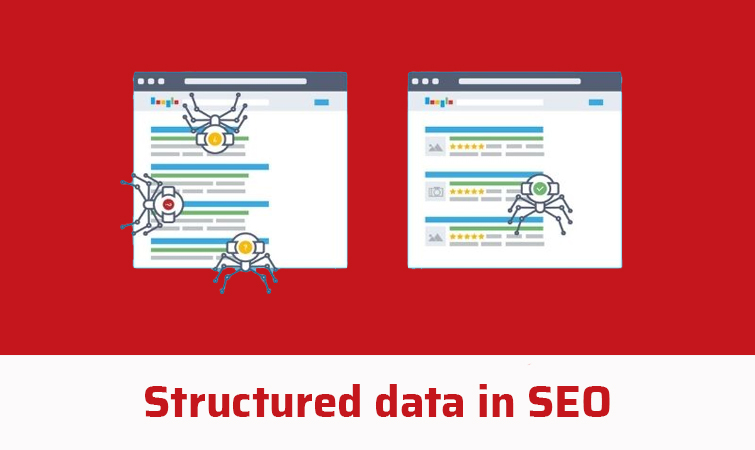What is structured data?
Structured data, often known as schema markup, is a sort of coding that helps to crawl, organize, and display your content easier for search engines. Most of the best SEO Company in Chennai adds structured data to their client’s website to rank higher on Google.
Structured data explain your data to search engines. Search engines can only tell what your data says without schema markup, and they have to work harder to figure out why it’s there. Are you perplexed yet? Here’s an illustration. Let’s imagine you wish to provide your company’s contact details. You could simply put the information in the footer of your website, which would suffice for any human visitor.
Search engines, on the other hand, will have to work a little more to decipher what that raw data means. If you utilize schema markup, you can persuade search engines that your contact information is your contact information (instead of just some random data).
I understand if that sounds perplexing, but bear with me! Over the course of this article, I’ll go over everything in great depth. Essentially, you’re assisting search engines in better analyzing your material. This is quite crucial. You’ll gain an SEO advantage if search engines can easily crawl your website.
“But, aren’t you supposed to write for human visitors, not machines?” I hear some of you say. You might be shocked to learn that schema markup was created with the intention of assisting users. Consider schema markup to be a super-detailed business card that clearly displays your contact information.
Another reason schema markup is essential is that it makes the search engine’s job even easier. As a result, you aren’t “writing for machines.” You’re adding new information without altering the content in any manner. You’ll be relieved to realize that you don’t need to know everything there is to know about schema markup in order to use it on your website. In fact, structured data can (and should) be used within an hour.
You should master the principles first, but after that, it’s relatively easy sailing. What you should (and shouldn’t) know. When I explain schema markup to my clients, they become frightened. It’s impossible to remember everything, and it appears too complicated, to begin with. The good news is that you don’t need to learn anything and can begin using structured data right away. Here’s what you’ll need to know:
1) The structured data to be used
We’ll be using JSON-LD because it’s the recommended type. I’m publishing this to let you know that microdata and RDFa are not interchangeable with JSON-LD. If you’re looking into structured data, make sure you’re looking at JSON-LD rather than one of the other two forms.
2) The most common schema terms
You might definitely get away with not knowing these, but if you take the time to study them, you’ll improve far more quickly.
i) itemscope: One of the most commonly used schema terms is item scope. It basically categorizes your material into topics. It particularly informs search engines that every content with an itemscope tag is about the same subject. Consider it as dividing your material into several areas.
You can make one small update to inform search engines that all of this information is related to the same subject. Simply add “itemscope” to the end of your first div> element. All of the contents between the div> tags will now be grouped together by search engines.
ii) itemtype: The item type phrase categorizes your material even more. The itemscope phrase informs search engines that your content was about an item, and the item type term tells them what kind of item it is. For example, the itemtype markup tells search engines that everything between the div>tags is about a single film.
iii) itemprop: This phrase refers to the ability to specify specific properties for your goods. The itemprop word basically means “extra information about the item.” You can assign an infinite number of different item props. As a result, search engines will be able to organize your information more easily and accurately.
3) The structured data guidelines from Google
You must follow Google’s criteria if you’re doing SEO for them––and who isn’t? Data that is structured is no exception. They provide excellent schema markup guidelines:
- When utilizing schema markup, it’s critical to remember these things. This isn’t the time for black-hat or gray-hat SEO tactics.
- Remember, the goal of structured data is to help search engines show your information more effectively for users.
- Assist the search engines, and they will assist you in return, increasing your visibility.
- Adding structured data to your website is a great way to make it more user-friendly.
Steps to add Schema Markup using WordPress Plugins
Unfortunately, this can be a time-consuming procedure. It all depends on the site management system you select and how much control you desire over the process. I’ll go over WordPress plugins as it is the best approach to deploy schema. If you’re one of the millions of individuals who use WordPress to power their websites, schema markup will be a breeze for you to implement.
There are a number of dedicated plugins available. The greatest, in my opinion, is Schema App Structured Data. This plugin will produce schema markup for your entire site, and you can even change the markup manually. (Alternatively, search for the plugin under Plugins > Add New.)
- After you’ve downloaded the plugin, go to Plugins > Add New to install it. Then select the zip file for the plugin you downloaded by clicking “Choose file.”
- Select “Install Now” from the drop-down menu.
- Finally, click “Plugin Activate.”
You’ll now notice a box underneath the editing window that says “Schema App Structured Data:” whenever you modify a post or page of any kind. Typically, the plugin will include the most appropriate sorts of schema markup. However, knowing the fundamentals of structured data will come in handy here. You can go over the markup and make any changes you think are necessary.
Click the pencil icon in the lower right corner to edit the markup. (Notice how JSON-LD is specified in the upper left of the box.) That’s exactly what you’re looking for.) In a nutshell, that’s the plugin. It’s quite easy to use, so if you use WordPress, I highly recommend it.

